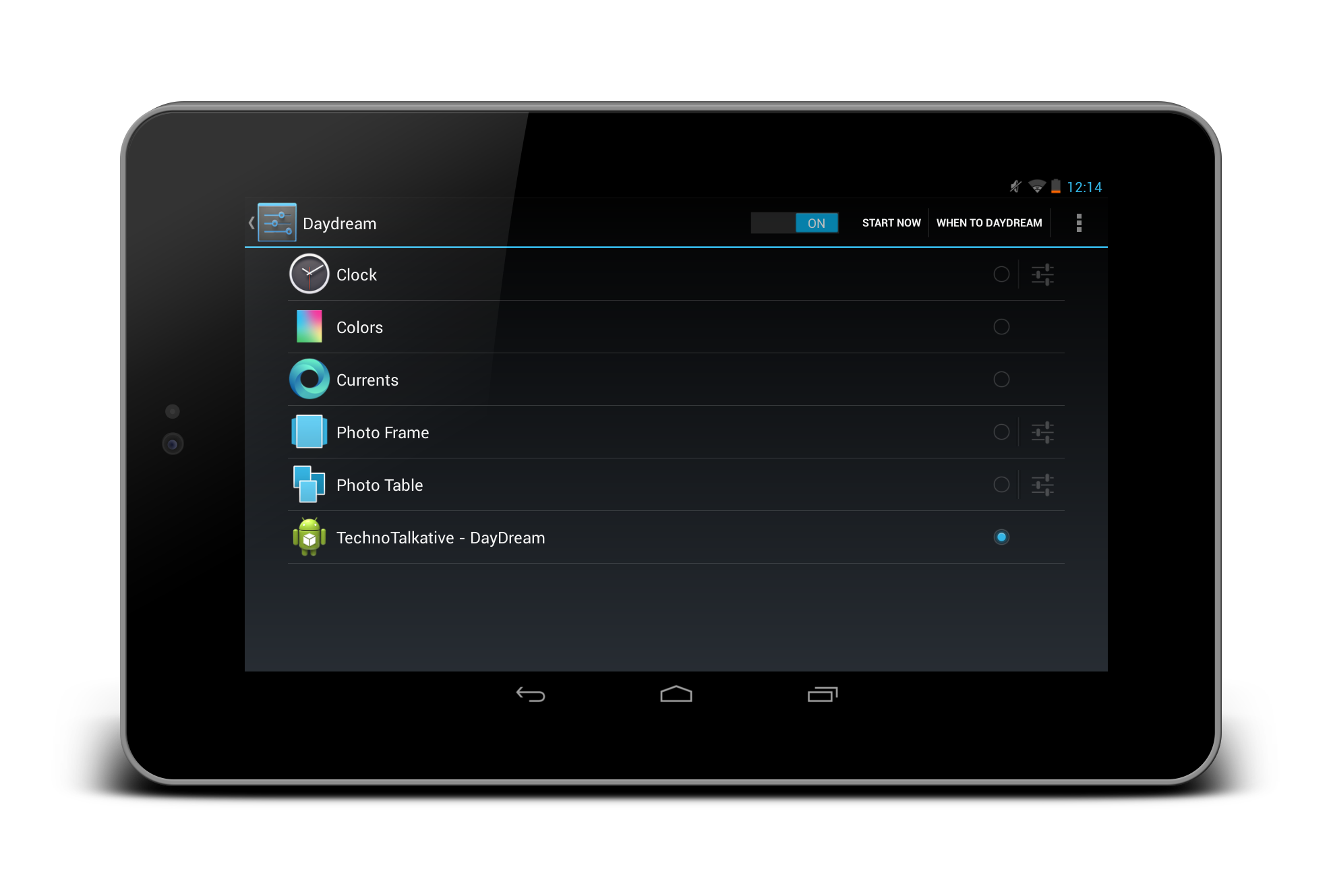Problem: How to load images from web and caching (storing images inside local storage)?
Description:
Have you gone through my previous article for Loading Remote Images in android? Actually it was the solution for loading images from web but not caching images into the local storage and hence it has to load image every times from web which is not a good solution because it would be consuming network bandwidth and user has to wait every time until image loads. To resolve this issue, we are going to implement an optimized solution for loading images from web as well as to cache images in local storage. As it will get stored into the local storage, it will check if image is already cached and available, if available then load it straight way otherwise download from web.
Solution:
MainActivity.java
package com.technotalkative.loadwebimage;
import com.technotalkative.loadwebimage.R;
import com.technotalkative.loadwebimage.imageutils.ImageLoader;
import android.app.Activity;
import android.os.Bundle;
import android.view.View;
import android.widget.ImageView;
public class MainActivity extends Activity {
private ImageView imgView;
private ImageLoader imgLoader;
private String strURL = "https://technotalkative.com/android.jpg";
@Override
public void onCreate(Bundle savedInstanceState) {
super.onCreate(savedInstanceState);
setContentView(R.layout.activity_main);
imgView = (ImageView) findViewById(R.id.imageView1);
imgLoader = new ImageLoader(this);
}
public void btnLoadImageClick(View v){
imgLoader.DisplayImage(strURL, imgView);
}
}
ImageLoader.java
Using DisplayImage(Url, ImageView) method of ImageLoader class, you can load and cache image. You just need to provide the web url of image and the imageview in which you want to display loaded image.
package com.technotalkative.loadwebimage.imageutils;
import java.io.File;
import java.io.FileInputStream;
import java.io.FileNotFoundException;
import java.io.FileOutputStream;
import java.io.InputStream;
import java.io.OutputStream;
import java.net.HttpURLConnection;
import java.net.URL;
import java.util.Collections;
import java.util.Map;
import java.util.WeakHashMap;
import java.util.concurrent.ExecutorService;
import java.util.concurrent.Executors;
import android.app.Activity;
import android.content.Context;
import android.graphics.Bitmap;
import android.graphics.BitmapFactory;
import android.widget.ImageView;
import com.technotalkative.loadwebimage.R;
public class ImageLoader {
MemoryCache memoryCache=new MemoryCache();
FileCache fileCache;
private Map<ImageView, String> imageViews=Collections.synchronizedMap(new WeakHashMap<ImageView, String>());
ExecutorService executorService;
public ImageLoader(Context context){
fileCache=new FileCache(context);
executorService=Executors.newFixedThreadPool(5);
}
final int stub_id=R.drawable.ic_launcher;
public void DisplayImage(String url, ImageView imageView)
{
imageViews.put(imageView, url);
Bitmap bitmap=memoryCache.get(url);
if(bitmap!=null)
imageView.setImageBitmap(bitmap);
else
{
queuePhoto(url, imageView);
imageView.setImageResource(stub_id);
}
}
private void queuePhoto(String url, ImageView imageView)
{
PhotoToLoad p=new PhotoToLoad(url, imageView);
executorService.submit(new PhotosLoader(p));
}
private Bitmap getBitmap(String url)
{
File f=fileCache.getFile(url);
//from SD cache
Bitmap b = decodeFile(f);
if(b!=null)
return b;
//from web
try {
Bitmap bitmap=null;
URL imageUrl = new URL(url);
HttpURLConnection conn = (HttpURLConnection)imageUrl.openConnection();
conn.setConnectTimeout(30000);
conn.setReadTimeout(30000);
conn.setInstanceFollowRedirects(true);
InputStream is=conn.getInputStream();
OutputStream os = new FileOutputStream(f);
Utils.CopyStream(is, os);
os.close();
bitmap = decodeFile(f);
return bitmap;
} catch (Throwable ex){
ex.printStackTrace();
if(ex instanceof OutOfMemoryError)
memoryCache.clear();
return null;
}
}
//decodes image and scales it to reduce memory consumption
private Bitmap decodeFile(File f){
try {
//decode image size
BitmapFactory.Options o = new BitmapFactory.Options();
o.inJustDecodeBounds = true;
BitmapFactory.decodeStream(new FileInputStream(f),null,o);
//Find the correct scale value. It should be the power of 2.
final int REQUIRED_SIZE=70;
int width_tmp=o.outWidth, height_tmp=o.outHeight;
int scale=1;
while(true){
if(width_tmp/2<REQUIRED_SIZE || height_tmp/2<REQUIRED_SIZE)
break;
width_tmp/=2;
height_tmp/=2;
scale*=2;
}
//decode with inSampleSize
BitmapFactory.Options o2 = new BitmapFactory.Options();
o2.inSampleSize=scale;
return BitmapFactory.decodeStream(new FileInputStream(f), null, o2);
} catch (FileNotFoundException e) {}
return null;
}
//Task for the queue
private class PhotoToLoad
{
public String url;
public ImageView imageView;
public PhotoToLoad(String u, ImageView i){
url=u;
imageView=i;
}
}
class PhotosLoader implements Runnable {
PhotoToLoad photoToLoad;
PhotosLoader(PhotoToLoad photoToLoad){
this.photoToLoad=photoToLoad;
}
@Override
public void run() {
if(imageViewReused(photoToLoad))
return;
Bitmap bmp=getBitmap(photoToLoad.url);
memoryCache.put(photoToLoad.url, bmp);
if(imageViewReused(photoToLoad))
return;
BitmapDisplayer bd=new BitmapDisplayer(bmp, photoToLoad);
Activity a=(Activity)photoToLoad.imageView.getContext();
a.runOnUiThread(bd);
}
}
boolean imageViewReused(PhotoToLoad photoToLoad){
String tag=imageViews.get(photoToLoad.imageView);
if(tag==null || !tag.equals(photoToLoad.url))
return true;
return false;
}
//Used to display bitmap in the UI thread
class BitmapDisplayer implements Runnable
{
Bitmap bitmap;
PhotoToLoad photoToLoad;
public BitmapDisplayer(Bitmap b, PhotoToLoad p){bitmap=b;photoToLoad=p;}
public void run()
{
if(imageViewReused(photoToLoad))
return;
if(bitmap!=null)
photoToLoad.imageView.setImageBitmap(bitmap);
else
photoToLoad.imageView.setImageResource(stub_id);
}
}
public void clearCache() {
memoryCache.clear();
fileCache.clear();
}
}
These are the required classes for loading image asynchronously and caching into the local memory storage.
1) MemoryCache
2) FileCache
3) Utils
MemoryCache.java
package com.technotalkative.loadwebimage.imageutils;
import java.util.Collections;
import java.util.Iterator;
import java.util.LinkedHashMap;
import java.util.Map;
import java.util.Map.Entry;
import android.graphics.Bitmap;
import android.util.Log;
public class MemoryCache {
private static final String TAG = "MemoryCache";
private Map<String, Bitmap> cache=Collections.synchronizedMap(
new LinkedHashMap<String, Bitmap>(10,1.5f,true));//Last argument true for LRU ordering
private long size=0;//current allocated size
private long limit=1000000;//max memory in bytes
public MemoryCache(){
//use 25% of available heap size
setLimit(Runtime.getRuntime().maxMemory()/4);
}
public void setLimit(long new_limit){
limit=new_limit;
Log.i(TAG, "MemoryCache will use up to "+limit/1024./1024.+"MB");
}
public Bitmap get(String id){
try{
if(!cache.containsKey(id))
return null;
//NullPointerException sometimes happen here http://code.google.com/p/osmdroid/issues/detail?id=78
return cache.get(id);
}catch(NullPointerException ex){
ex.printStackTrace();
return null;
}
}
public void put(String id, Bitmap bitmap){
try{
if(cache.containsKey(id))
size-=getSizeInBytes(cache.get(id));
cache.put(id, bitmap);
size+=getSizeInBytes(bitmap);
checkSize();
}catch(Throwable th){
th.printStackTrace();
}
}
private void checkSize() {
Log.i(TAG, "cache size="+size+" length="+cache.size());
if(size>limit){
Iterator<Entry<String, Bitmap>> iter=cache.entrySet().iterator();//least recently accessed item will be the first one iterated
while(iter.hasNext()){
Entry<String, Bitmap> entry=iter.next();
size-=getSizeInBytes(entry.getValue());
iter.remove();
if(size<=limit)
break;
}
Log.i(TAG, "Clean cache. New size "+cache.size());
}
}
public void clear() {
try{
//NullPointerException sometimes happen here http://code.google.com/p/osmdroid/issues/detail?id=78
cache.clear();
size=0;
}catch(NullPointerException ex){
ex.printStackTrace();
}
}
long getSizeInBytes(Bitmap bitmap) {
if(bitmap==null)
return 0;
return bitmap.getRowBytes() * bitmap.getHeight();
}
}
FileCache.java
Using FileCache, we will create TTImages_cache folder for caching images into it. Also to load image if synced already. We can use clear() method of FileCache class to clear synced images.
package com.technotalkative.loadwebimage.imageutils;
import java.io.File;
import android.content.Context;
public class FileCache {
private File cacheDir;
public FileCache(Context context){
//Find the dir to save cached images
if (android.os.Environment.getExternalStorageState().equals(android.os.Environment.MEDIA_MOUNTED))
cacheDir=new File(android.os.Environment.getExternalStorageDirectory(),"TTImages_cache");
else
cacheDir=context.getCacheDir();
if(!cacheDir.exists())
cacheDir.mkdirs();
}
public File getFile(String url){
//I identify images by hashcode. Not a perfect solution, good for the demo.
String filename=String.valueOf(url.hashCode());
//Another possible solution (thanks to grantland)
//String filename = URLEncoder.encode(url);
File f = new File(cacheDir, filename);
return f;
}
public void clear(){
File[] files=cacheDir.listFiles();
if(files==null)
return;
for(File f:files)
f.delete();
}
}
Utils.java
package com.technotalkative.loadwebimage.imageutils;
import java.io.InputStream;
import java.io.OutputStream;
public class Utils {
public static void CopyStream(InputStream is, OutputStream os)
{
final int buffer_size=1024;
try
{
byte[] bytes=new byte[buffer_size];
for(;;)
{
int count=is.read(bytes, 0, buffer_size);
if(count==-1)
break;
os.write(bytes, 0, count);
}
}
catch(Exception ex){}
}
}
activity_main.xml
<RelativeLayout xmlns:android="http://schemas.android.com/apk/res/android"
xmlns:tools="http://schemas.android.com/tools"
android:layout_width="match_parent"
android:layout_height="match_parent" >
<Button
android:id="@+id/btnLoadImage"
android:layout_width="wrap_content"
android:layout_height="wrap_content"
android:layout_centerHorizontal="true"
android:onClick="btnLoadImageClick"
android:text="Load Image" />
<ImageView
android:id="@+id/imageView1"
android:layout_width="match_parent"
android:layout_height="200dp"
android:layout_centerInParent="true"
android:padding="10dp"
android:scaleType="fitXY"
android:src="@drawable/ic_launcher" />
</RelativeLayout>
Note:
Don’t forget to include INTERNET and WRITE_EXTERNAL_STORAGE permission in AndroidManifest.xml
<uses-permission android:name="android.permission.INTERNET" /> <uses-permission android:name="android.permission.WRITE_EXTERNAL_STORAGE" />
Download this example from here: https://github.com/PareshMayani/Android-LoadWebImageAndCache



